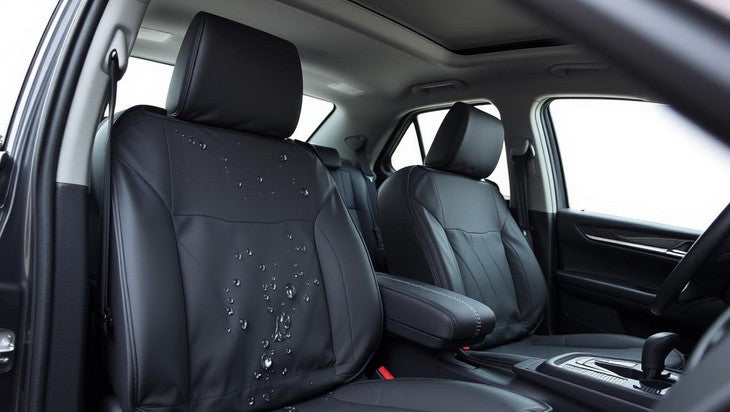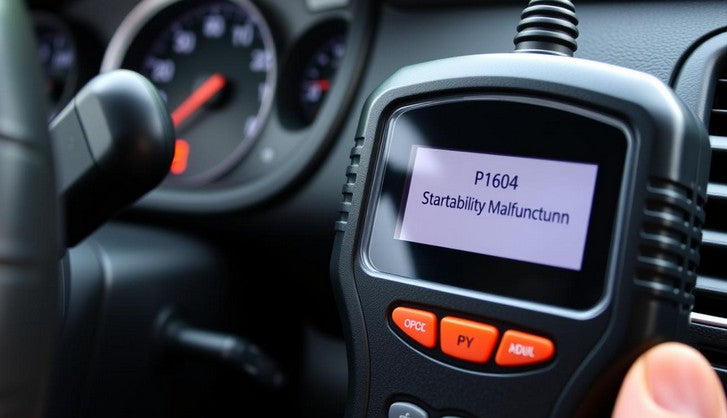Choosing the right seat covers for your vehicle involves more than just picking an attractive design. The material makes a significant difference in durability, comfort, and protection. When comparing neoprene vs polyester seat covers, understanding their unique properties helps you make an informed decision that matches your lifestyle, climate, and budget.
In this comprehensive guide, we'll explore how these popular materials stack up against each other, their ideal use cases, and which might be the perfect match for your specific needs.
Understanding Neoprene and Polyester Seat Cover Materials
Before diving into specific comparisons, let's understand what these materials actually are and why they've become popular choices for car seat protection.
What is Neoprene?
Neoprene is a synthetic rubber material originally developed as a wetsuit fabric. It's the same material used in diving suits, providing excellent water resistance and insulation. For car seat covers, neoprene offers a soft, cushioned feel while delivering superior protection against spills and moisture.
What is Polyester?
Polyester is a synthetic fabric made from petroleum-based materials. It's widely used in clothing, furniture, and automotive applications. Polyester seat covers are known for their durability, color retention, and affordability, making them a popular choice for everyday vehicle protection.
Key Differences: Neoprene vs Polyester Seat Covers
|
Feature |
Neoprene Seat Covers |
Polyester Seat Covers |
|
Water Resistance |
Excellent (100% waterproof) |
Good (water-resistant, not waterproof) |
|
Durability |
High (3-5 years average lifespan) |
Medium-High (2-4 years average lifespan) |
|
Comfort |
Very comfortable, cushioned feel |
Comfortable, less padding |
|
UV Protection |
Excellent with UV treatment |
Good, may fade over time |
|
Price Range |
$150-$300 |
$50-$150 |
|
Breathability |
Limited |
Good |
|
Cleaning |
Wipe clean or machine wash |
Machine washable |
Are Neoprene Seat Covers Waterproof?
One of the most significant advantages of neoprene seat covers is their exceptional water resistance. The same material that keeps divers dry underwater provides outstanding protection for your car seats.
Neoprene Pros
- 100% waterproof protection against spills and moisture
- Excellent for active lifestyles, pets, and children
- Superior cushioning and comfort for long drives
- UV-treated to prevent fading and sun damage
- Maintains temperature better (doesn't get too hot or cold)
- Highly durable against tears and abrasion
Neoprene Cons
- Higher price point than polyester options
- Limited breathability can cause sweating in hot weather
- Fewer style and pattern options available
- Can develop odors if not properly maintained
- Heavier material that may be bulkier to install
Polyester Seat Covers for Everyday Protection
Polyester seat covers offer reliable protection at a more affordable price point, making them popular for everyday drivers who want basic protection without breaking the bank.
Polyester Pros
- More affordable than neoprene options
- Good water resistance for everyday spills
- Excellent breathability for comfort in hot weather
- Lightweight and easy to install
- Wide variety of colors, patterns and styles
- Machine washable for easy maintenance
Polyester Cons
- Not fully waterproof like neoprene
- Less padding and cushioning
- May fade faster with prolonged sun exposure
- Typically less durable than neoprene
- Can pill or develop worn spots over time
Find Your Perfect Seat Cover Material
Ready to protect your vehicle's interior with quality seat covers? Browse our selection of premium neoprene and polyester options designed for your specific vehicle model.
Best Use Cases: When to Choose Each Material
When Neoprene Seat Covers Excel
- Active Outdoor Enthusiasts: If you frequently go hiking, camping, or to the beach, neoprene's waterproof properties are invaluable.
- Pet Owners: For those with dogs that join them on adventures, neoprene resists pet hair, claws, and accidents.
- Off-Road Driving: Jeep and truck owners who tackle muddy trails benefit from neoprene's superior protection.
- Water Sports: Surfers, kayakers, and swimmers will appreciate not having to worry about wet swimwear damaging seats.
- Families with Young Children: Spill-proof kids meet their match with neoprene's easy-clean surface.
When Polyester Seat Covers Make More Sense
- Daily Commuters: For basic protection during everyday driving, polyester offers good value.
- Hot Climate Dwellers: Those in warm regions benefit from polyester's superior breathability.
- Budget-Conscious Shoppers: When protection is needed at a lower price point, polyester delivers.
- Style-Focused Owners: With more color and pattern options, polyester offers greater customization.
- Occasional Use Vehicles: For cars that aren't subjected to extreme conditions, polyester provides adequate protection.
Polyester Seat Covers for Hot Climates
If you live in a region with consistently high temperatures, the breathability of your seat covers becomes a crucial consideration. Polyester seat covers offer significant advantages in hot climates that may make them preferable to neoprene in these conditions.
Why Polyester Performs Better in Heat
Polyester's woven structure allows for better air circulation between your body and the seat. This improved ventilation helps prevent the uncomfortable sweating and sticking that can occur with less breathable materials like neoprene. During summer months, this breathability can make a significant difference in comfort during your daily commute.
Additionally, quality polyester seat covers often incorporate mesh sections specifically designed to enhance airflow. These strategic ventilation zones help dissipate body heat and moisture, keeping you cooler and more comfortable even when temperatures soar.
Neoprene Seat Covers for Wet and Rugged Conditions
For those who regularly face challenging conditions, neoprene seat covers provide unmatched protection against the elements. Their superior waterproofing and durability make them the preferred choice for specific lifestyles and environments.
Superior Protection in Extreme Conditions
Neoprene's rubber-like composition creates a complete barrier against moisture. Whether you're coming back from surfing with a wet wetsuit or dealing with unexpected rain during an off-road adventure, neoprene prevents water from reaching your original upholstery.
The material's thickness also provides additional padding and protection against sharp objects, making it ideal for work vehicles or outdoor equipment transport. This extra cushioning not only protects your seats but enhances comfort during long drives on rough terrain.
Cost Comparison and Value Assessment
When evaluating seat covers, the initial price is just one factor in determining overall value. Consider both the upfront investment and long-term benefits when making your decision.
Initial Investment
Polyester seat covers typically range from $50-$150 for a complete set, while neoprene options generally cost between $150-$300. This price difference reflects the material costs, manufacturing complexity, and performance capabilities of each option.
Long-Term Value
While neoprene covers cost more initially, their superior durability often results in a longer lifespan. A quality set of neoprene covers may last 5+ years with proper care, compared to 2-4 years for typical polyester covers. This extended lifespan can make neoprene more economical in the long run for some users.
Additionally, consider the value of protecting your vehicle's original upholstery. Quality seat covers of either material can help maintain your car's resale value by preventing permanent damage to the factory seats.
Protect Your Investment
Quality seat covers are an investment in your vehicle's longevity and comfort. Whether you choose neoprene or polyester, the right covers will keep your interior looking new for years to come.
Maintenance and Cleaning Requirements
Proper maintenance extends the life of your seat covers and keeps them looking their best. Each material has different cleaning requirements that should factor into your decision.
Cleaning Neoprene Seat Covers
- Wipe away surface dirt and spills with a damp cloth
- For deeper cleaning, use mild soap and water solution
- Many neoprene covers are machine washable (gentle cycle)
- Air dry completely before reinstalling
- Avoid harsh chemicals that can damage the neoprene
Cleaning Polyester Seat Covers
- Machine washable on gentle cycle with cold water
- Use mild detergent without bleach
- Spot clean minor stains as they occur
- Air dry or tumble dry on low heat
- Iron on low setting if needed to remove wrinkles
Style and Customization Options
Your seat covers don't just protect—they also contribute to your vehicle's interior aesthetic. Both materials offer various style options, though with different ranges of customization.
Neoprene Style Options
Neoprene seat covers typically come in solid colors or two-tone designs. Common color options include black, gray, blue, red, and tan. Some manufacturers offer custom piping or stitching for added visual interest. While the style range is more limited than polyester, neoprene covers offer a sleek, sporty appearance that many drivers prefer.
Polyester Style Options
Polyester provides the widest range of colors, patterns, and designs. Options include everything from solid colors to complex patterns, camouflage, sports team logos, and custom prints. This versatility makes polyester ideal for drivers who want to personalize their vehicle's interior or match a specific color scheme.
Some manufacturers also offer hybrid designs that combine polyester with other materials to achieve both style and functionality goals.
Installation and Fit Considerations
The ease of installation and quality of fit significantly impact your satisfaction with seat covers. Both materials present different challenges and benefits during installation.
Neoprene Installation
Neoprene's thicker, slightly stretchy nature can make it more challenging to install initially. However, this same quality allows it to conform well to seat contours once in place. The material's weight helps it stay positioned correctly with less shifting over time.
Polyester Installation
Polyester covers are typically lighter and more flexible, making them easier to maneuver during installation. The tradeoff is that they may require more frequent adjustment to maintain proper positioning, especially in vehicles with heavy use.
For both materials, custom-fit covers designed specifically for your vehicle model will provide the best results. Universal fit options, while more affordable, rarely match the appearance and functionality of custom-designed covers.
Final Recommendation: Choosing the Right Material for Your Needs
After comparing all aspects of neoprene vs polyester seat covers, the best choice depends on your specific needs, lifestyle, and budget. Here's our recommendation framework:
Choose Neoprene If:
- You frequently encounter water, mud, or other liquids
- You have pets that regularly ride in your vehicle
- You're willing to invest more for maximum protection
- You engage in outdoor activities like surfing, fishing, or off-roading
- You prefer additional cushioning and comfort
Choose Polyester If:
- You're seeking affordable, everyday protection
- You live in a hot climate where breathability is crucial
- You want more style and color options
- You prefer easier installation and maintenance
- Your vehicle doesn't regularly face extreme conditions
Many drivers find that a combination approach works best—using neoprene covers in vehicles that face challenging conditions and polyester in daily drivers that need basic protection with maximum comfort.
Ready to Protect Your Vehicle's Interior?
Whether you choose neoprene for maximum protection or polyester for everyday comfort, quality seat covers are an essential investment for maintaining your vehicle's value and appearance.
Conclusion: Making Your Final Decision
When comparing neoprene vs polyester seat covers, there's no universal "best" option—only the right choice for your specific situation. Consider your typical driving conditions, passengers (including pets), climate, budget, and style preferences when making your decision.
Both materials offer significant advantages over unprotected seats, and either will help preserve your vehicle's interior and resale value. By understanding the strengths and limitations of each material, you can make an informed choice that provides the protection and comfort your vehicle needs.
Remember that quality matters regardless of material—a well-made polyester cover will outperform a poorly constructed neoprene one. Invest in the best quality you can afford within your chosen material category for maximum satisfaction and longevity.




Leave a comment
This site is protected by hCaptcha and the hCaptcha Privacy Policy and Terms of Service apply.